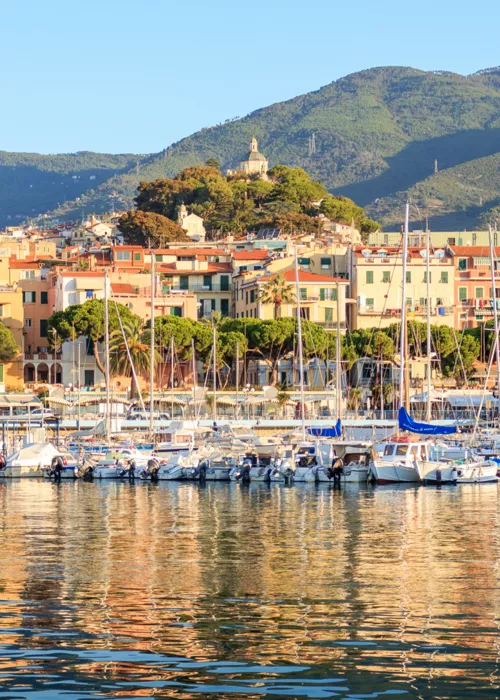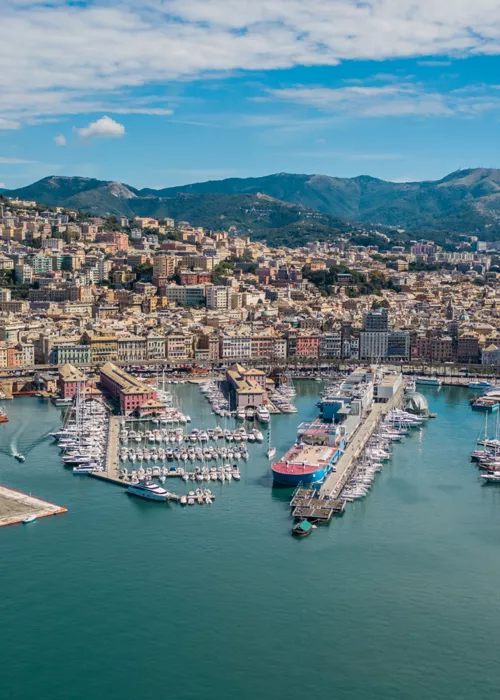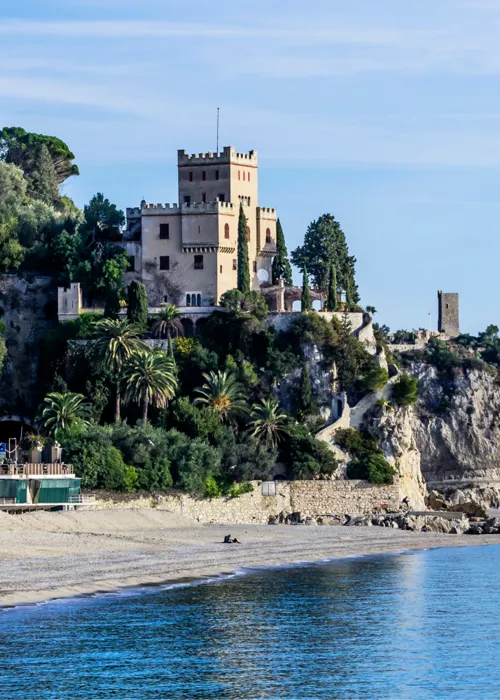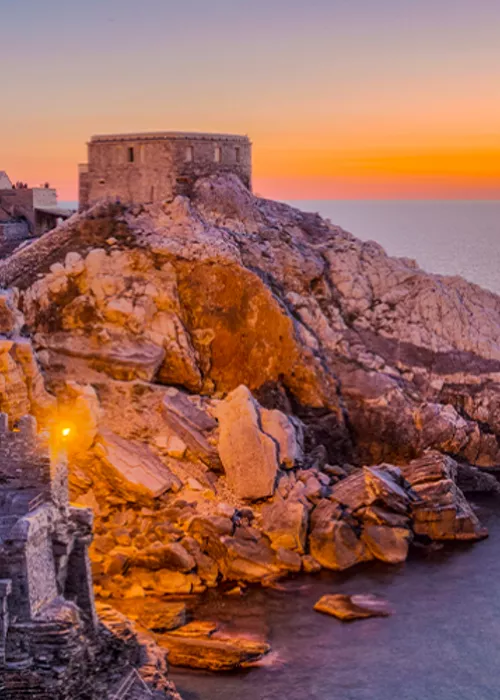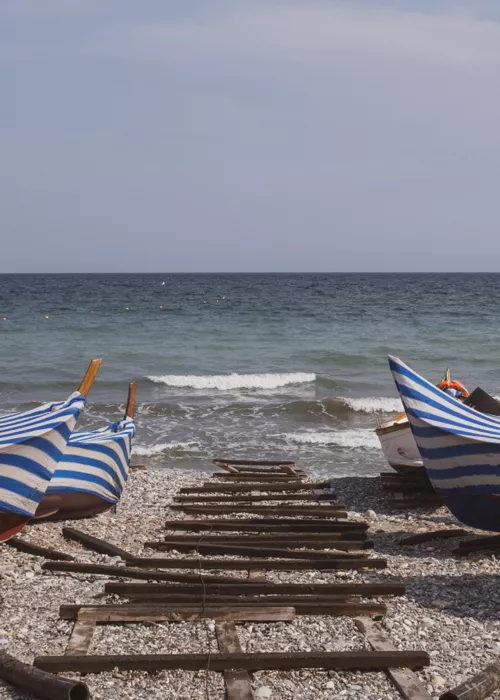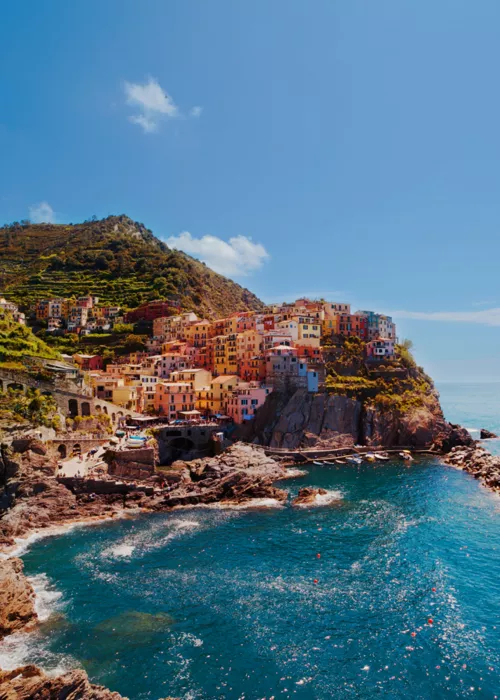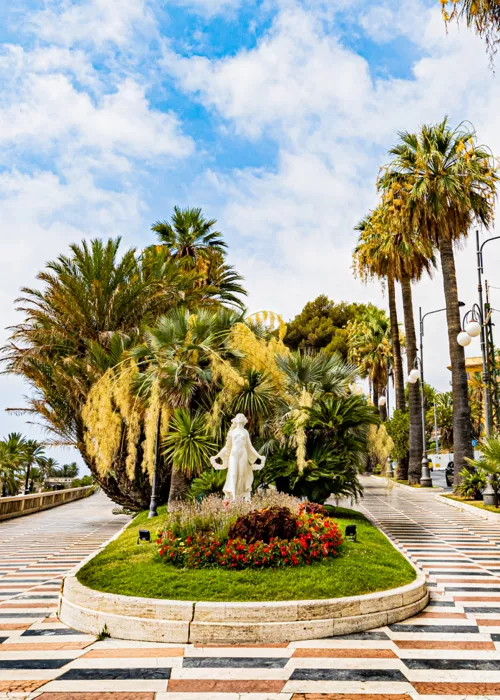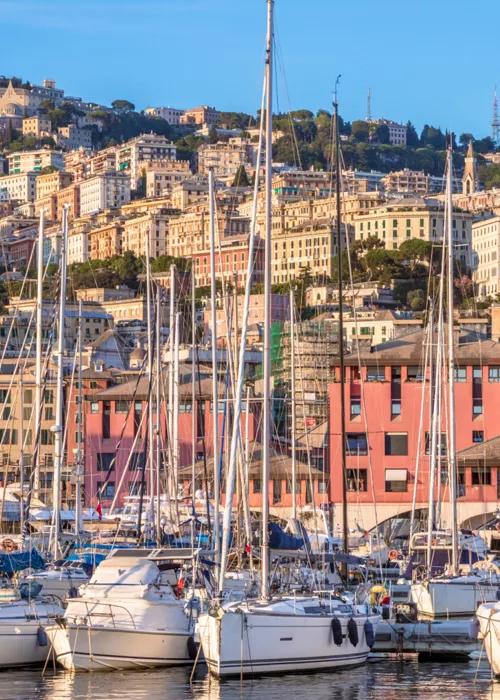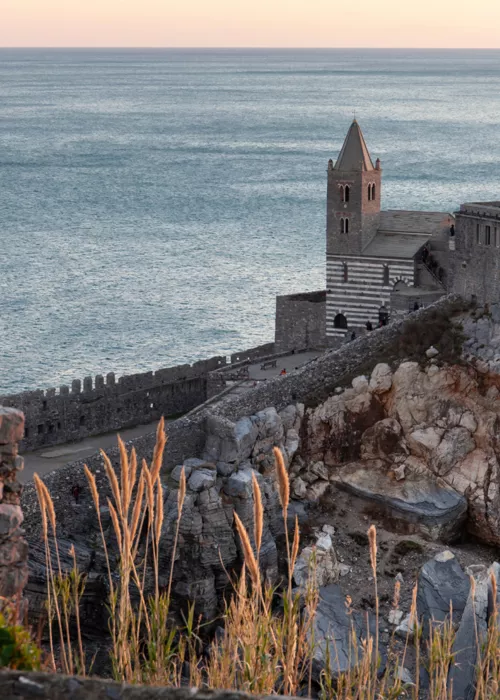Oneglia

Because of the way Italian roads and railways are laid out with respect to Liguria, we are most likely to approach Imperia from Oneglia, getting off the train or exiting the motorway at Imperia Est – but of course there is also the coastal option of State Road 1 Aurelia – in the districts where the Impero stream flows into the sea. For those arriving by car, there is ample parking next to Calata Cuneo, overlooking the harbour between the commercial pier and the protection of the Long Pier with its private moorings, both of which have a lighthouse at the end.
Towards Genoa, there are mostly pebble and rocky beaches, both free and with bathing facilities, while moving inland from Calata Cuneo you enter the more urban Oneglia, to feast your eyes inside the Basilica of San Giovanni Battista and then, no doubt, to sit at a table under the arcades of Piazza Dante.
Western Liguria is known as a land of olive trees. So it is worth going a little further away from the sea to find out more at the Carlo Carli Olive Tree Museum, where the exposition is lively and informative, but by no means boring. The company organised it as its own corporate museum, and as a celebration of the tree that symbolises the Mediterranean.
Basilica of San Giovanni Battista

Whether you arrive at San Giovanni Battista from Calata Cuneo - along the alleyways around the covered market - or from the centre of Piazza Dante, the Basilica welcomes you with its baroque façade on the small square. The church is essentially 18th century, but the façade was completed rather late, in the early 19th century. From here you can't see the bell tower, the highest in the city. You can, however, enter and see the richness of the decoration inside: it can be measured against the sparseness of Imperia Cathedral in Porto Maurizio, which is decidedly more austere.
From Piazza Dante, reached through the porticoes on Via Bonfante, Via Berio leads to the pair of palm trees that mark the entrance to the Carlo Carli Olive Tree Museum, a true monument to an historic food production in Oneglia. The Fratelli Carli Emporium around the corner is very prominent.
Villa Grock

A fifteen-minute walk from Piazza Dante takes you up to what was once the residence of Charles Adrien Wettach, a Swiss citizen from the Canton of Berne who moved to Liguria, a great star of circus art and famous in 20th-century Europe under the pseudonym Grock. After the sea, beaches and olive oil, this is the main tourist attraction for visitors to Oneglia.
A versatile character, in the big top and on stage from an early age, he was able to play several musical instruments. Wettach organised his first tour of Italy in the 1920s and ended up marrying an Italian singer and transforming a newly purchased house, with some greenery around it, into a highly original private villa and garden.
After Grock was forced to take refuge in his native Switzerland due to the German occupation, and definitively after the owner's death in 1954, what was then known as Villa Bianca fell into disrepair. However, the Province of Imperia purchased it, and with its transition to the municipality at the beginning of the third millennium, the complex was fully restored and opened to the public. The Grock Prize established by the Province has been awarded over the years to comedians such as Paolo Rossi, Antonio Albanese, Paolo Villaggio and Tullio Solenghi.
Porto Maurizio

The historic centre of the 'other Imperia' – clearly connected to its sister city Oneglia by public transport – is associated with the Parasio, as the city's promontory is called, with its magnificent views. The differences in height and the views are already worth a visit, as is the lively fabric of period buildings: you can explore it by following the signs for the 'Gira Parasio' route and entering the Loggia of Santa Chiara, the Oratory of San Pietro and theCathedral of San Maurizio.
Below the Parasio, at sea level, is the Imperia Naval Museum, a new addition to the former International Naval Museum of Western Liguria, and the sandy expanse of the Spiaggia d'Oro (Golden Beach), which in fine weather fills up with beach umbrellas and deckchairs. Both the museum and the bathing establishments are located close to the harbour, which has docks and berths protected by the Long Pier: it is worth taking a stroll to the lighthouse at the end of the pier, as it is the best place for a view of the city.

The exhibition organised in Calata Anselmi, in Porto Maurizio's Borgo Marina district, testifies, with archaeological finds, remains, objects and nautical instruments, from the 17th century to the present day, to the vital relationship between humans and the sea since the dawn of time. Multimedia installations and interactive simulators immerse visitors in the lives of the characters presented, and an auditorium dedicated to conferences and meetings on seafaring sometimes hosts theatrical and musical events.
Rising out of the museum is the copper-green dome of the Planetarium, where, seated in an armchair, you can gaze upwards and be transported through space and time. Images of more than six thousand stars at different moments of the Earth's rotation, the Moon, the planets and the celestial vault are projected in a scientifically accurate manner from all parts of the Earth - or from a space station.
Parasio

After perhaps taking one of the lifts from sea level up to the Parasio promontory, you can begin your exploratory walk through the alleyways, underpasses and views of Porto Maurizio's old town centre from Piazza del Duomo: here stands the large, 18th-century Basilica di San Maurizio, the city's cathedral.
You then walk up a little to Borgo Parasio - the cosy medieval district in the centre - along Via Fossi and Via Achille Vianelli. A sign on the latter invites you to go down the adjacent Via Santa Caterina to find the birthplace of St Leonard, the patron saint, and next to it, the black-and-white striped oratory that bears his name. A plaque at number 11 on the same street marks the birthplace of Felice Cascione, composer of the Resistance song "Fischia il vento".
Via Vianelli continues along the oval of Borgo Parasio and soon reaches the panoramic Loggia of Santa Chiara and the nearby Oratory of San Pietro. Other views are assured just outside the city: following the Via Aurelia up to the University Centre – in the Borgo Foce district – you can look for the start of theSalita Monte Calvario to get to the Sanctuary of Monte Calvario.
Shrine of Nostra Signora delle Grazie

The Sanctuary, high up in the greenery above Imperia, is a fifteen or twenty-minute drive from Porto Maurizio. Public buses take you to the village of Montegrazie, from where it is about a kilometre walk until you arrive.
There are very valid reasons for choosing this destination, however, both for the spectacular panorama and, in terms of art, for the late-medieval frescoes displayed on the walls of the main church, which are extremely expressive in their often popular, comic-book-like language. Probably due to certain crude scenes of executions and the damned at the crossroads, the wall paintings were covered over with plaster at the start of the Counter-Reformation, but restored to view in the late 19th century.
If you then wish to extend your visit to other places further inland – although visitors to Imperia really need a car, because it's about fifty kilometres to Arma di Taggia – one obvious suggestion is Ceriana, a village climbing up through different height levels and views, with walls and churches perched on the rocks, that is not given sufficient attention by traditional tourism. To return to Nobel Prize winners, the family of Giulio Natta from Imperia was from Ceriana.



